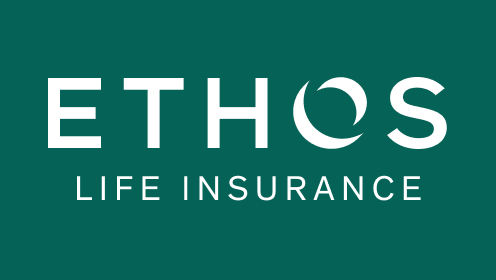Life insurance can help your family continue to pay the bills and reach their goals if you die and your income stops. But the premiums can vary a lot depending on your age, health, insurance company and type of coverage.
A few key strategies can help save you hundreds each year while still providing the coverage you need. Here are 10 tips to save money on life insurance.
1. Buy when you’re young.
One of the biggest factors in life insurance rates is your age when you buy the policy. The younger you are, the lower the premiums.
For example, the average annual premium for a $500,000 20-year term policy for a nonsmoking man in excellent health is:
- $406 if he buys the coverage at age 30
- $622 if he buys it at age 40
- $1,461 if he buys the coverage at age 50
Buying when you’re young can lock in low premiums for the policy’s term, such as 20 or 30 years, or for your lifetime with certain types of permanent insurance.
As you get older, you’re also more likely to develop health problems that could boost your premiums even more or may make it difficult to qualify for coverage.
“Buy your life insurance when you’re young and healthier,” says Robert Gleeson, American Council of Life Insurers’ medical consultant.
2. Consider term insurance.
There are many reasons to buy life insurance. You may want help to support your family until your kids are grown or to cover the mortgage payments until your house is paid off.
If your insurance need lasts for a limited time period like this, consider getting term life insurance. Term insurance premiums can be significantly less than permanent life insurance premiums (such as whole life or universal life) for the same size death benefit.
You can lock in the rate for a certain number of years, such as 20 or 30 years. The shorter the term, the lower the premiums.
The downside to term insurance is that the premiums will usually jump after your term ends if you end up needing life insurance for longer than originally expected. Permanent insurance never expires as long as you pay any required premiums and you can build up cash value savings, which you don’t have with term insurance.
Find out if you can convert the term life insurance policy to permanent life insurance if your needs change; you may have a limited amount of time to convert the policy without new medical underwriting.
3. Calculate your coverage needs.
Calculate how much life insurance you need before you start to compare rates. Your family may need coverage to pay regular bills, but they may not need to pay off the entire mortgage or pay the full cost of college for the children.
Also, if your children are older or your spouse works, you may need less coverage than someone who is the sole breadwinner and has young children.
Run your numbers through a life insurance calculator, such as the Life Insurance Calculator on Insure.
You should also review your needs every few years or when you have any life changes, such as if you have another child or buy a new house with a larger mortgage.
4. Shop around.
Premiums can vary a lot for the same person by company.
Some insurers have several rate classes based on your health and other risk factors. These classifications include standard rates, preferred and super-preferred for the healthiest people. They may also charge higher “table rates” for people with health issues.
Some insurers have fewer rate classes and may ask fewer health questions but charge more for the healthiest people.
“Life insurers have different target markets and different corporate objectives,” says Gleeson. “There are some companies that do minimal underwriting and charge a higher price, but there are other companies that want to keep policyholders on the books for decades and underwrite more diligently.”
Some companies have specialized products for certain conditions. John Hancock’s Aspire, for example, is specifically designed for people living with diabetes.
When getting price quotes from several insurers, provide as much medical information as possible so you can find the company with the best rate for your situation. The insurer with the best rates for the healthiest people may not have the best rates for people with any medical issues.
You should also ask about premium bands when shopping for life insurance. Most life insurance products have premium bands. Higher face amounts have lower premium rates.
In some cases, when the insurance amount is close to the next higher band, it costs less to buy more coverage.
For example, the cost for a $475,000, 10-year term policy for a healthy 44-year-old male nonsmoker from a well-known company is $321. The cost for $500,000 of coverage is $ 310 because the rate drops at $500,000.
Ask if the product you are buying has premium bands. If the amount of life insurance you need is close to the next higher band, be sure to get a quote at the higher amount.
5. Don’t buy a guaranteed issue policy if you’re healthy.
Some insurers offer “guaranteed issue” policies. These policies don’t require a medical exam and can be issued quickly.
A guaranteed issue policy may seem like a good deal because it’s easier to get coverage. However, insurers generally assume that people who apply for these policies may have medical issues.
Guaranteed issue policies may be your only option if you have health issues. Otherwise, you should try to get a traditional policy with a medical exam. A policy with medical underwriting will result in lower rates than going with a guaranteed policy.
6. Quit smoking.
Smoking can reduce your life expectancy significantly and increase the insurer’s risk of having to pay a death benefit.
As a result, smokers’ life insurance rates are much higher than for nonsmokers — usually two or three times higher.
Insurers generally check for evidence of nicotine in your bloodstream during your medical exam. The definition of smoker and the impact on rates can vary by insurer, so it’s a good idea to get quotes from several insurers.
If you quit smoking, you may be able to get a lower rate, but you usually need to quit for more than a year to be considered a nonsmoker. The time period and price difference after you quit can also vary by insurer.
Find out more about how smoking affects life insurance rates.
7. Lose weight and improve your health.
Your height and weight determine your body mass index (BMI), which can make a big difference in your premiums, especially for the best rate classes. Insurers are generally looking for a BMI of 20 to 25 for the preferred and super-preferred rates, says Gleeson.
Your cholesterol and blood pressure readings also affect your rate, especially in the best rate classes. The specific cut-offs vary by company. According to MassMutual’s MyLifeScore calculator, insurers generally consider normal cholesterol to be less than 200 mg/dL, borderline high to be 200-239 mg/dL and high to be 240-620 mg/dL. (The MyLifeScore calculator helps you assess your risk factors that can affect your life insurance rates.)
Controlling high blood pressure or cholesterol through medication may qualify for a lower rate. Also, insurers may look at how these factors interact. For example, having slightly high blood pressure may not affect your rate as much if your weight and cholesterol readings are good, says Gleeson.
Find out more about how weight affects life insurance rates.
8. Present a strong case if you have medical issues.
Because of medical advances and insurers’ research, some medical conditions that caused insurers to reject people automatically in the past may now be insurable.
“There are things that we used to decline 20 years ago, we can now offer standard rates on,” says Joel Jones, vice president and chief underwriter for Mutual Trust Life Insurance in Oak Brook, Illinois, and a Society of Actuaries volunteer. “As medical advances take place, life insurance companies change how favorably they view things.”
Rather than declining someone who had a heart attack or cancer, for example, insurers now look for more details about the condition before deciding whether to issue the policy and how much to charge.
“If the person had a heart attack and had a stent put in, no heart damage, rigorous control of cholesterol and blood pressure and they’re seeing their doctor, the life insurer will look at that very favorably,” says Gleeson. “That heart attack is different from someone who has not taken care of themselves and continues to smoke.”
The criteria can vary by insurer, so it’s imperative to shop around if you have medical conditions.
“Different companies have different guidelines,” says Jones.
Find out more about buying life insurance when you have pre-existing conditions.
9. Ask for a rate re-evaluation if your health improves.
You may be able to save money by asking your insurer for a rate re-evaluation if your health improves. You usually need to submit new medical records and a certain amount of time may need to pass after your health improves for your new situation to count.
If that doesn’t work, shop around for a policy again — another insurance company may give you a bigger benefit for your current health status.
10. Ask about discounts and rewards programs.
Some insurers offer a discount if you pay premiums automatically from your credit card or bank account and if you pay your bill in full for the year rather than having monthly or quarterly billing.
Another way to save is rewards-based premium discount programs for healthy lifestyles, which are relatively new for life insurance companies.
Currently, there are only two:
-
Global Atlantic introduced Wellness For Life in 2008.
-
John Hancock introduced its Vitality program in 2015.
Both programs are optional but take different approaches.
The Global Atlantic Wellness For Life Rider discounts have two levels. Level I discounts are earned simply for getting a physical every year. Level II discounts are earned for getting a physical every year and maintaining weight within a predetermined range. Discounts are applied beginning in year three. There is no charge for the Wellness For Life Rider.
The John Hancock Vitality program also has two levels. Vitality Go is free of charge and offers discounts on health-related products and services, including healthy food. Vitality Plus is a comprehensive lifestyle program.
Brooks Tingle, president and CEO of John Hancock Life Insurance Company, says, “Using behavioral science, John Hancock Vitality rewards healthy steps individuals take every day, like exercising, getting annual health screenings, staying tobacco-free, purchasing healthy food, and practicing meditation and good sleep habits, enabling customers to earn potential premium savings (up to 25%) along with discounts, benefits or rewards from popular retailers and apps such as Apple, Amazon, REI, Hotels.com, Headspace, and fitness brands Fitbit, Polar, and Garmin.”
Policyholders achieve a Bronze, Silver, or Gold Vitality status and receive premium discounts, according to the level. The cost for Vitality Plus starts at $2 per month.
Life insurance rewards programs help you save money, and they also get results. Tingle says six years of the program shows that Vitality is helping members to maintain or improve their health:
-
Seventy-six percent are using a wearable to make the most of their fitness activity
-
Nearly 50% have reported BMI reductions
-
Thirty-three percent with high cholesterol brought their measures in range in a year
-
Eighty percent report similar or better health year over year
-
Nearly 47% of members with high blood pressure reported bringing their reading in range over a year
-
Thirty-seven percent of members with a high glucose reading brought their level in range over a year
Life insurance is a vital piece of your financial plan, but that doesn’t mean it has to break the bank. Follow these tips and you may be able to find an affordable life insurance policy that meets all of your needs.











